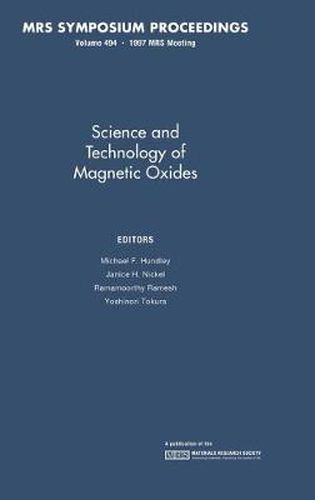Readings Newsletter
Become a Readings Member to make your shopping experience even easier.
Sign in or sign up for free!
You’re not far away from qualifying for FREE standard shipping within Australia
You’ve qualified for FREE standard shipping within Australia
The cart is loading…






With the developing progress of materials fabrication, it is possible to produce materials with exciting electronic and magnetic properties which may be candidates for future device applications. One key class of these materials is the metallic magnetic oxide systems. This book focuses on colossal magnetoresistance (CMR) materials, including manganites and cobalites. Transport and magnetic properties and their dependence on stress, growth conditions, stoichiometry and elemental composition are explored quite extensively. However, the large magnetic fields required to obtain the CMR effect have been perceived as a technological roadblock for commercialization of this phenomenon. This has motivated research aimed both at reducing the intrinsic field dependence as well as at developing novel device structures that will reduce the required effective field. Technologically useful devices will undoubtedly involve heterostructures. Since the magnetic and transport properties are extremely stress-dependent, CMR heterostructures will most likely involve other metallic or insulating oxide materials. Materials of interest include half-metallic ferromagnets, yttrium garnet materials and ferrites.
$9.00 standard shipping within Australia
FREE standard shipping within Australia for orders over $100.00
Express & International shipping calculated at checkout
With the developing progress of materials fabrication, it is possible to produce materials with exciting electronic and magnetic properties which may be candidates for future device applications. One key class of these materials is the metallic magnetic oxide systems. This book focuses on colossal magnetoresistance (CMR) materials, including manganites and cobalites. Transport and magnetic properties and their dependence on stress, growth conditions, stoichiometry and elemental composition are explored quite extensively. However, the large magnetic fields required to obtain the CMR effect have been perceived as a technological roadblock for commercialization of this phenomenon. This has motivated research aimed both at reducing the intrinsic field dependence as well as at developing novel device structures that will reduce the required effective field. Technologically useful devices will undoubtedly involve heterostructures. Since the magnetic and transport properties are extremely stress-dependent, CMR heterostructures will most likely involve other metallic or insulating oxide materials. Materials of interest include half-metallic ferromagnets, yttrium garnet materials and ferrites.